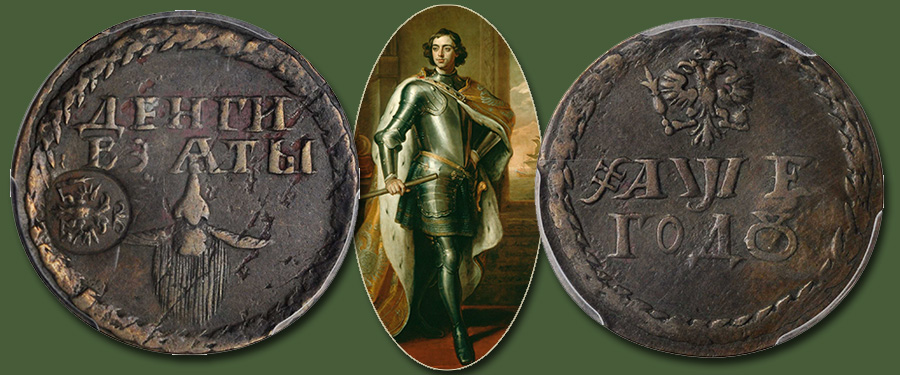
Following the early deaths of his elder half-brother Feodor III and his elder brother Ivan V, Peter achieved sole power at the helm of the vast Tsardom of Russia at the age of just 24 in 1696. To learn the best ways in which to advance his sizable yet fairly impoverished and somewhat primitive homeland, he traveled on a secret trip to Europe, working in shipyards and gaining insight into the various political landscapes across the west. As the Ottoman Empire to his southwest posed a threat to Russia’s access to waterways via the Crimean peninsula and the Black Sea, Peter saw modernization as vital for his people. While in Europe, he observed the western look and attire, noting the more sophisticated clothing worn by men and women, as well as seemingly more trivial aspects, like the presence of facial hair—or lack thereof—by men in the west. Upon his return in 1698, Peter instituted many of these reforms, including the so-called “beard tax.”
Previously, beards were worn out of custom and/or for religious purposes, and were very much part of the Russian way of life for men. Peter’s reforms, however, placed a fairly progressive tax upon these whiskers, with wealthy merchants charged an annual tax of 100 rubles for the privilege of retaining their beards, while members of the military, government officials, and townsfolk were charged 60 rubles. The scale slid all the way down to the poorest in Russia who were charged a single kopek each time one wearing a beard entered a town, thereby needing to pay, shave, or be turned away. Though this single kopek may not seem like much, it meant a great deal to a large portion of the population living in serfdom. For those who paid the annual tax, a way of denoting such payment was necessary, giving rise to the rather numismatically important aspect of the beard tax—the beard tokens.
The obverse of these beard tokens (бородовой знак) features the two line legend reading ДЕНГИ / ВЗАТЫ (money received) along with a nose, mustache, mouth, and goatee, while on the reverse is an imperial double eagle above the date (1705) in Cyrillic format. As a means of indicating payment, the tokens were counterstamped with a smaller version of the imperial double eagle on the “beard” side, a form of cancellation for fulfillment of the tax. Owing to having been carried by men to show this adherence, these tokens are generally encountered with a good deal of wear or exhibiting many surface issues.
As the perfect way to start “No Shave November,” we feature here one of these extremely interesting pieces—a PCGS SPECIMEN-35 Brown—in all of its mustachioed glory. This example will be offered in our Official Auction of the 2020 N.Y.I.N.C.
To view our upcoming auction schedule and future offerings, please visit StacksBowers.com where you may register and participate in upcoming sales.
We are always seeking coins, medals, and pieces of paper money for future sales, and are currently accepting submissions for our Official Auction of the N.Y.I.N.C. in January 2020. Following that, our next Collectors Choice Online (CCO) World =coin and paper money auction will be in February 2020. If you would like to learn more about consigning, whether a singular item or an entire collection, please contact one of our consignment directors today and we will assist you in achieving the best possible return on your material.





